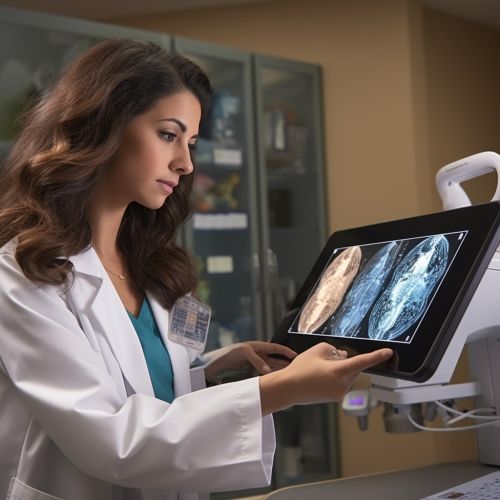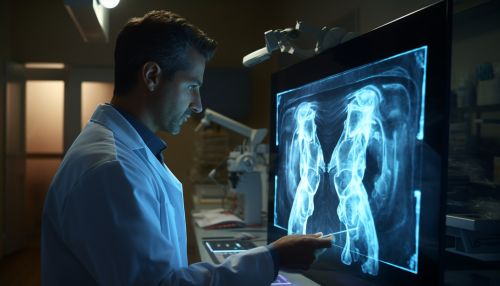Radiology
Introduction
Radiology is a medical specialty that uses imaging to diagnose and treat diseases seen within the body. Radiologists use a variety of imaging techniques such as X-ray, CT, MRI, ultrasound, and nuclear medicine to diagnose or treat diseases.


History
The history of radiology can be traced back to Röntgen's discovery of X-rays in 1895. This groundbreaking discovery paved the way for the development of modern radiology. The use of X-rays became widespread in a short period of time and by the early 20th century, the potential applications of radiology in medicine were already being recognized.
Radiological Techniques
Radiological techniques are primarily divided into two categories: diagnostic radiology and interventional radiology.
Diagnostic Radiology
Diagnostic radiology involves the use of imaging to detect, monitor, and treat medical conditions. The most commonly used diagnostic radiology techniques include:
- X-ray: This is the oldest and most frequently used form of medical imaging. It involves exposing a part of the body to a small dose of ionizing radiation to produce pictures of the inside of the body.
- CT: CT scan combines a series of X-ray images taken from different angles and uses computer processing to create cross-sectional images of the bones, blood vessels and soft tissues inside your body.
- MRI: MRI uses a powerful magnetic field and radio waves to generate detailed images of the organs and tissues within the body.
- Ultrasound: Ultrasound imaging, also called sonography, uses high-frequency sound waves to produce images of structures within your body.
- Nuclear medicine: In nuclear medicine imaging, radioactive substances are administered to the patient to create images that show how tissues and organs are functioning.
Interventional Radiology
Interventional radiology is a sub-specialty of radiology which provides minimally invasive image-guided diagnosis and treatment of diseases. Procedures are performed using guidance techniques such as fluoroscopy, ultrasound, computed tomography, or magnetic resonance imaging.
Radiology in Medicine
Radiology plays a crucial role in modern medicine. It is used in virtually every area of healthcare, including emergency medicine, pediatrics, surgery, oncology, and geriatrics. Radiologists often work as part of a multidisciplinary team, contributing their expertise in imaging to aid in diagnosis and treatment.
Future of Radiology
The future of radiology is being shaped by advances in technology, including artificial intelligence (AI), machine learning, and big data. These technologies have the potential to revolutionize the field of radiology by improving diagnostic accuracy, increasing efficiency, and enhancing patient care.
